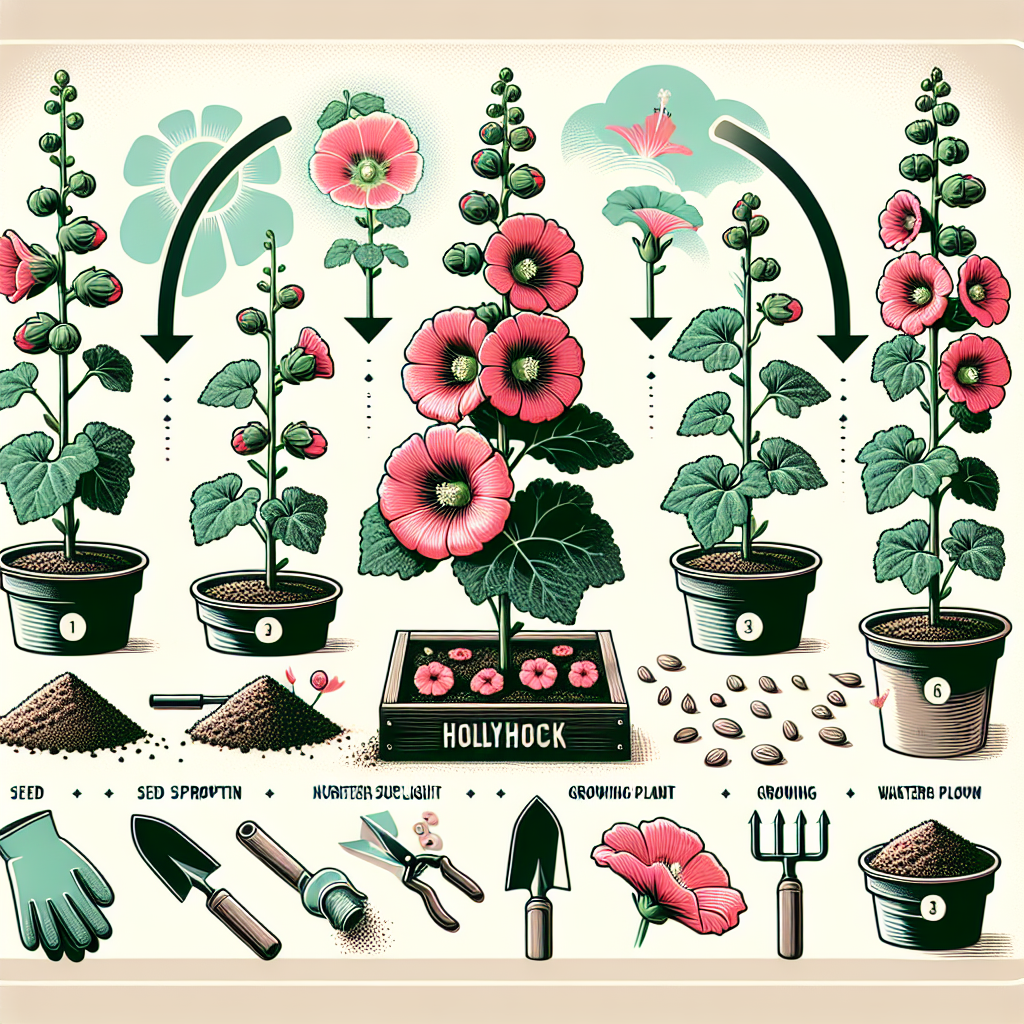
How to grow hollyhocks
How to Grow Hollyhocks: A Comprehensive Guide
Hollyhocks (Alcea rosea) are tall, flowering plants renowned for their impressive height and vibrant blooms. Often associated with cottage gardens, these perennials provide a cheerful burst of color that can brighten any garden or landscape. They come in various colors, including pink, white, red, and yellow, making them a versatile choice for many gardeners. If you’re looking to add a touch of charm to your garden, this guide will walk you through how to grow hollyhocks successfully.
Understanding Hollyhocks
Before delving into the steps of growing hollyhocks, it's crucial to understand these plants and their growing conditions. Hollyhocks thrive in well-drained soil and prefer full sun, making them ideal for many garden environments. Additionally, they can reach heights of up to 8 feet, so placing them effectively in your garden is essential. They bloom in mid-summer and can last for several weeks, attracting bees, butterflies, and hummingbirds.
Choosing the Right Varieties
When growing hollyhocks, selecting the right variety suited for your climate is the first step. Here are a few popular varieties to consider:
- Southern Belle: Known for its double flowers and stunning color variations.
- Majorette: A dwarf variety, perfect for smaller gardens.
- Chater's Double: Features large, fully double blooms, favored for a showy display.
- Black Knight: A unique variety with deep maroon flowers.
- Spring Celebrities: Perfect for colder climates with exceptional hardiness.
Preparing to Grow Hollyhocks
Optimal Growing Conditions
For thriving hollyhocks, consider the following growing conditions:
- Sunlight: Hollyhocks require full sun, ideally receiving at least 6-8 hours of direct sunlight daily.
- Soil: Well-draining soil enriched with organic matter is essential for healthy growth.
- Watering: Regular watering is important, particularly during dry spells. However, ensure the soil is not waterlogged.
When to Plant Hollyhocks
The timing of planting hollyhocks can significantly impact their growth. You can plant them in the spring after the last frost or in the fall to allow them to establish roots before the winter. If you're growing them from seeds, start them indoors about 6-8 weeks before the last frost date for the best results.
Steps to Grow Hollyhocks
Step 1: Starting from Seeds
Growing hollyhocks from seeds is a rewarding experience. Follow these steps:
- **Seed Preparation:** Soak the seeds in water for 24 hours before planting to enhance germination.
- **Planting:** Plant seeds ¼ inch deep in seed-starting trays filled with lightweight potting mix.
- **Light Requirements:** Place the trays in a sunny location or under grow lights, ensuring they receive enough light.
- **Germination:** Expect germination within 7-14 days. Keep the soil evenly moist but not soggy.
Step 2: Transplanting Seedlings
Once seedlings develop a few sets of true leaves, they are ready for transplanting:
- **Hardening Off:** Gradually acclimatize the seedlings to outdoor conditions over 7-10 days by placing them outside for a few hours daily.
- **Soil Preparation:** Amend the garden soil with compost to improve fertility and drainage.
- **Spacing:** Plant seedlings about 18-24 inches apart in their final location to allow for their mature height.
Step 3: Direct Sowing
If you prefer direct sowing, ensure the soil temperature is a minimum of 60°F (15°C) before planting seeds in the garden:
- **Site Preparation:** Clear the planting area of weeds and debris.
- **Planting:** Sow the seeds about ¼ inch deep and cover them lightly with soil.
- **Care:** Water the area gently to avoid displacing the seeds, and keep the soil consistently moist until germination.
Caring for Your Hollyhocks
Watering and Fertilizing
Maintaining the right moisture levels is crucial for hollyhocks:
- Water: Provide them with 1 inch of water per week, either from rainfall or supplemental watering.
- Fertilizer: Apply a balanced fertilizer once in early spring and again after the first bloom to encourage continued flowering.
Pest and Disease Control
Hollyhocks are prone to certain pests and diseases:
- Rust: A fungal disease characterized by orange spots on the leaves. Remove and destroy infected leaves.
- Spider Mites: These tiny pests can cause yellowing leaves. Treat with insecticidal soap if necessary.
- Slug Control: Slugs can damage young plants. Use organic slug bait or set out traps to protect your hollyhocks.
Staking Your Hollyhocks
Due to their height, hollyhocks may require support to prevent them from falling over:
- Use stakes or tall garden supports to keep the plants upright, especially during windy weather.
- Wrap the plants loosely with twine to avoid damaging the stems.
Encouraging Blooms
Deadheading
To promote further blooming, consider deadheading your hollyhocks:
- Remove spent flowers to encourage new growth and extend the blooming season.
- Snipping off the flower spikes when they fade can also help maintain the plant's energy for future flowers.
Winter Care
Hollyhocks are generally hardy, but some winter care will ensure they come back strong in the spring:
- Cut back the foliage after the first frost to avoid pest harboring.
- Applying a layer of mulch can help insulate roots during colder months.
Harvesting Seeds
If you want to save seeds for future planting, follow these simple steps:
- Allow the flowers to go to seed; you’ll notice brown seed pods forming.
- Harvest the pods when they turn brown and begin to dry on the plant.
- Store the seeds in a cool, dry place, allowing them to be reused in the next planting season.
Conclusion
Growing hollyhocks can bring joy as they bloom into vibrant towers of color throughout your garden. By understanding how to grow hollyhocks and following the steps outlined in this guide, you'll be on your way to cultivating these delightful flowers in no time. Whether you're enhancing an existing garden or creating a new landscape, hollyhocks can add a touch of timeless beauty that delights the senses and attracts pollinators.
With proper care and attention, your hollyhocks will flourish and provide a stunning display year after year. Happy gardening!
By Guest, Published on October 17th, 2024